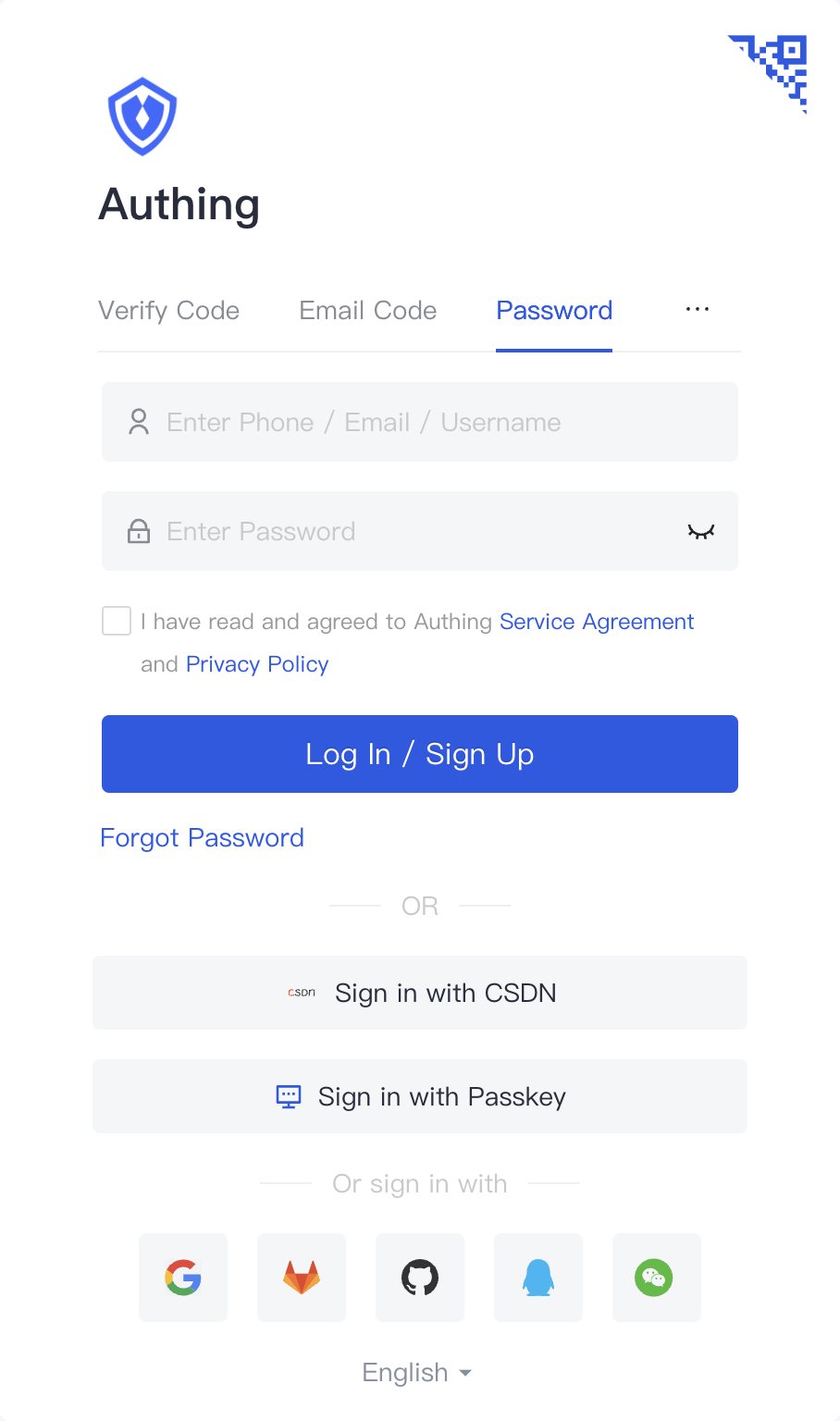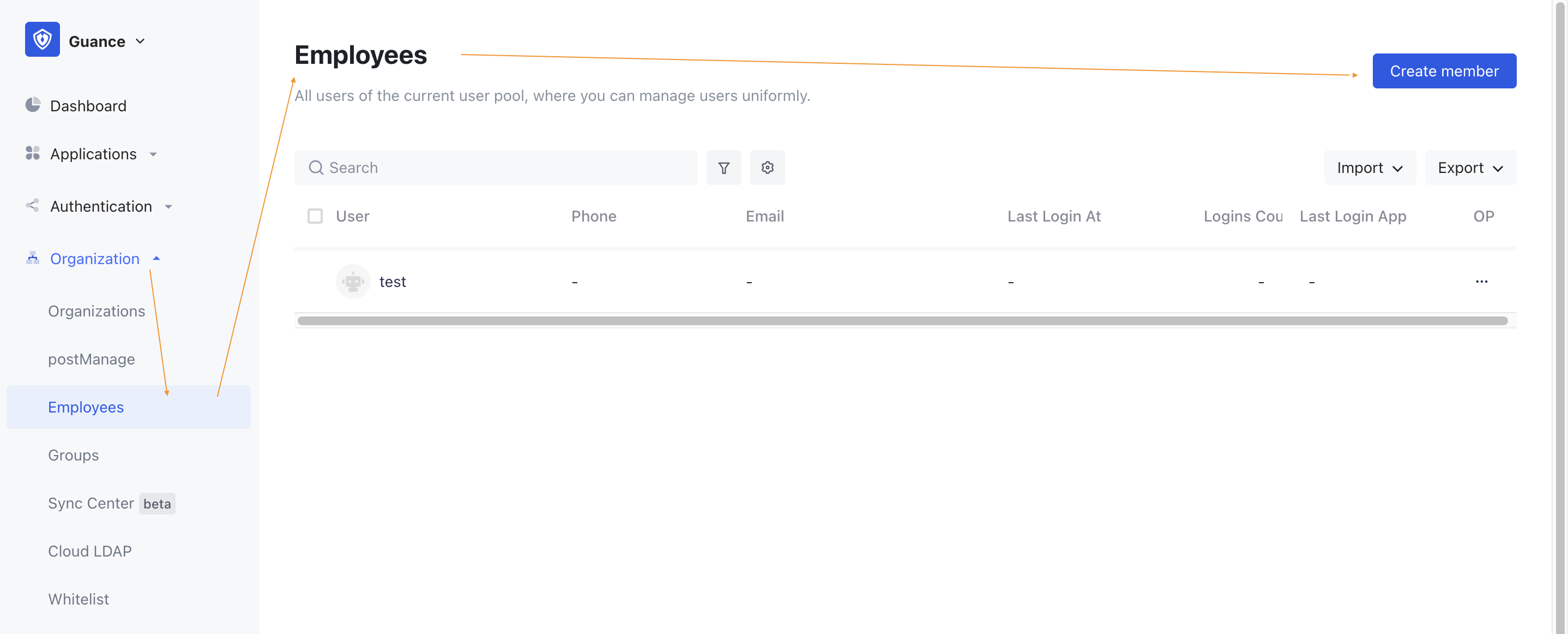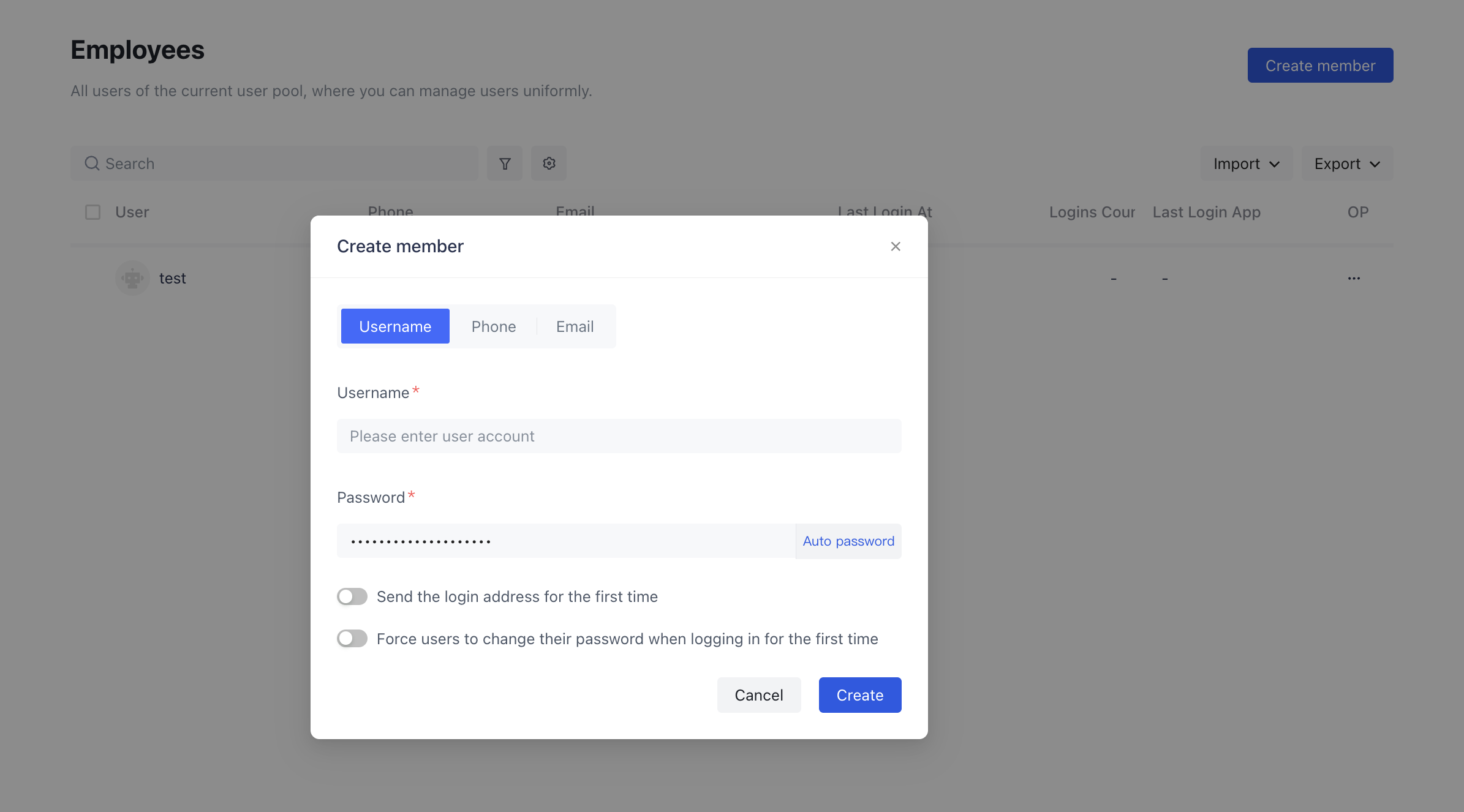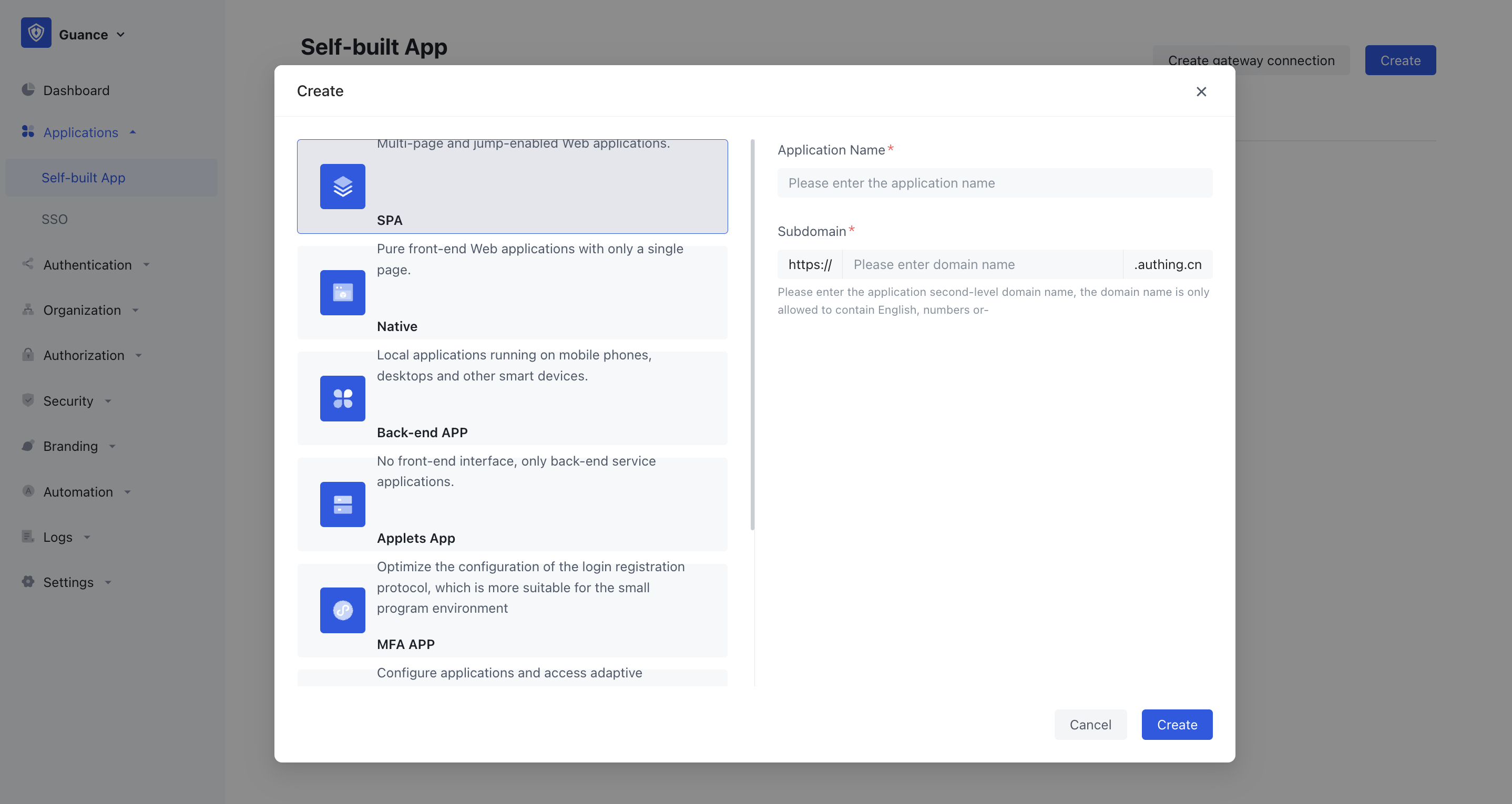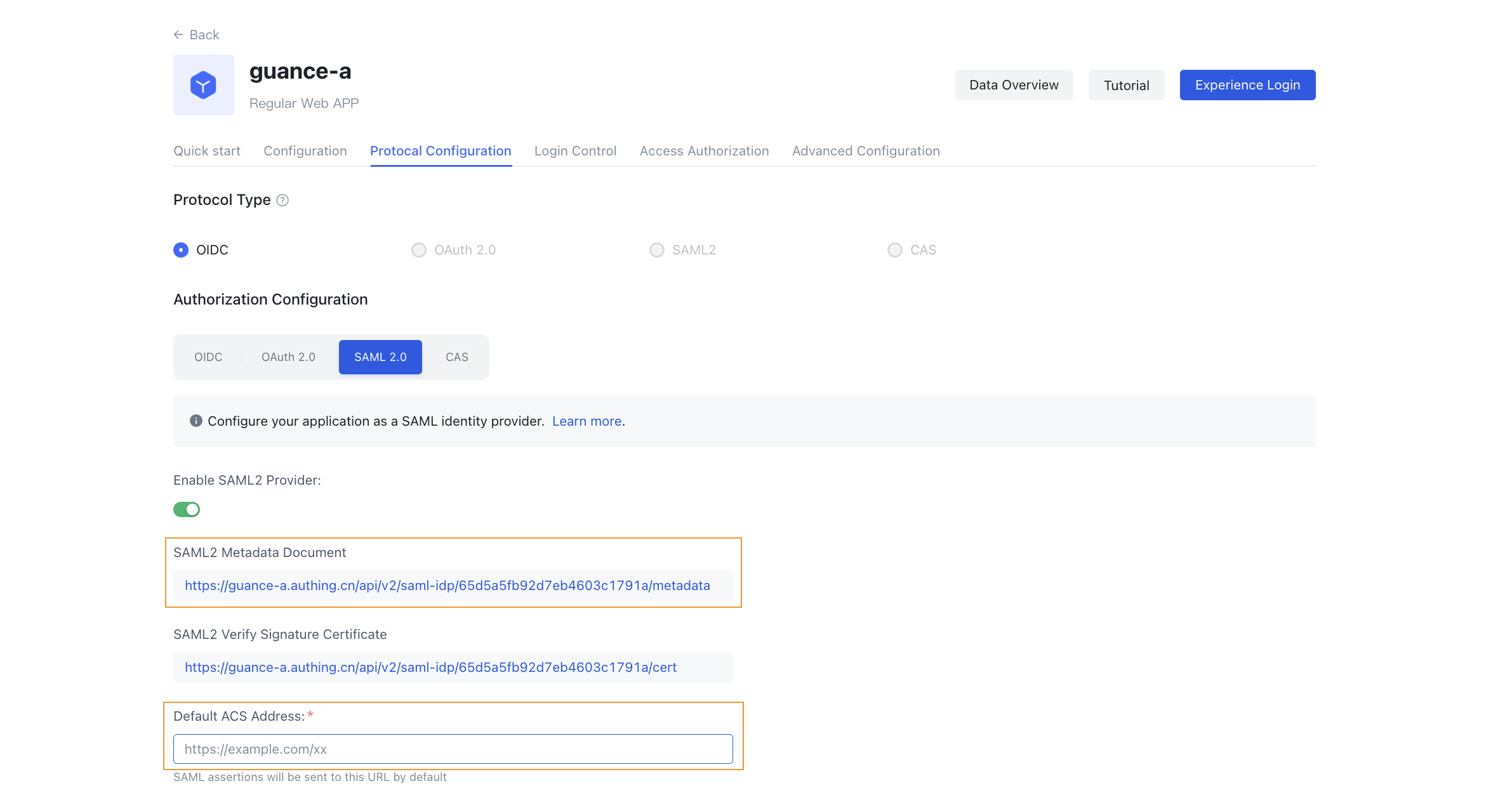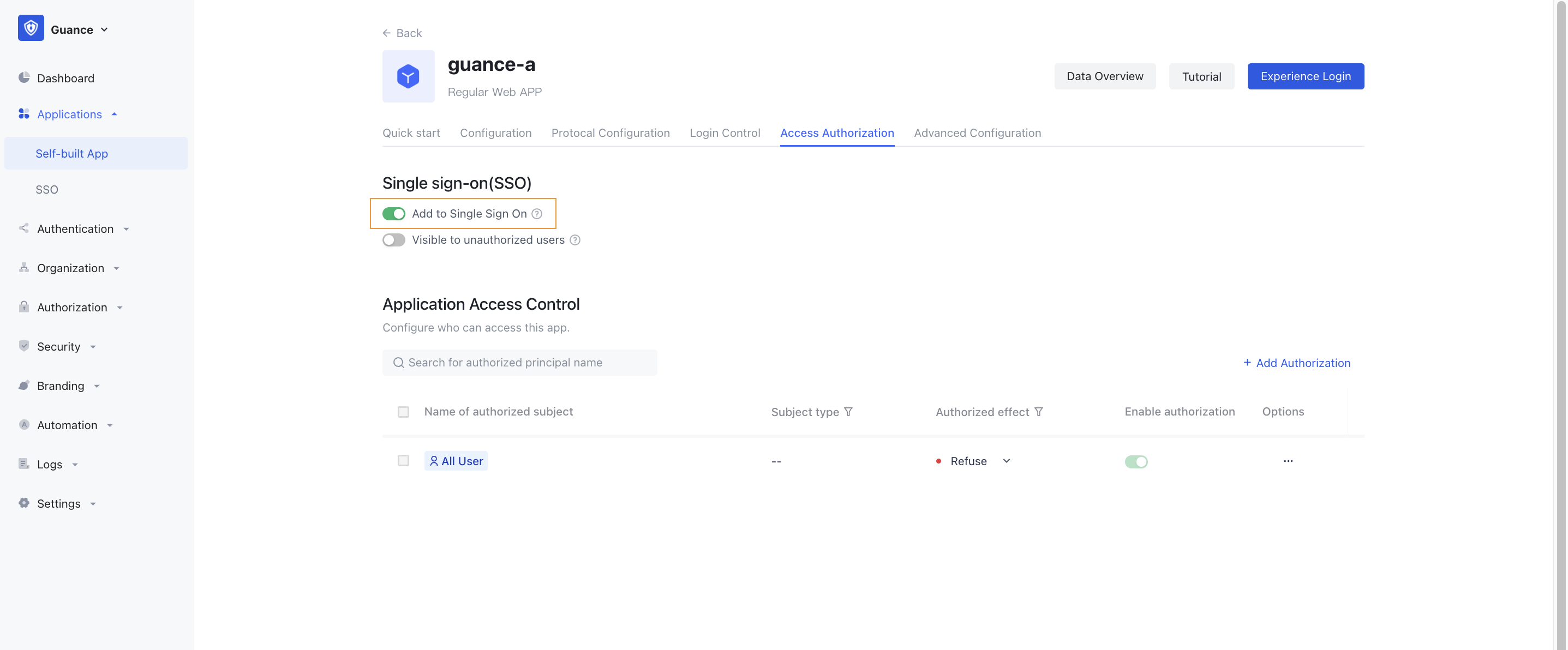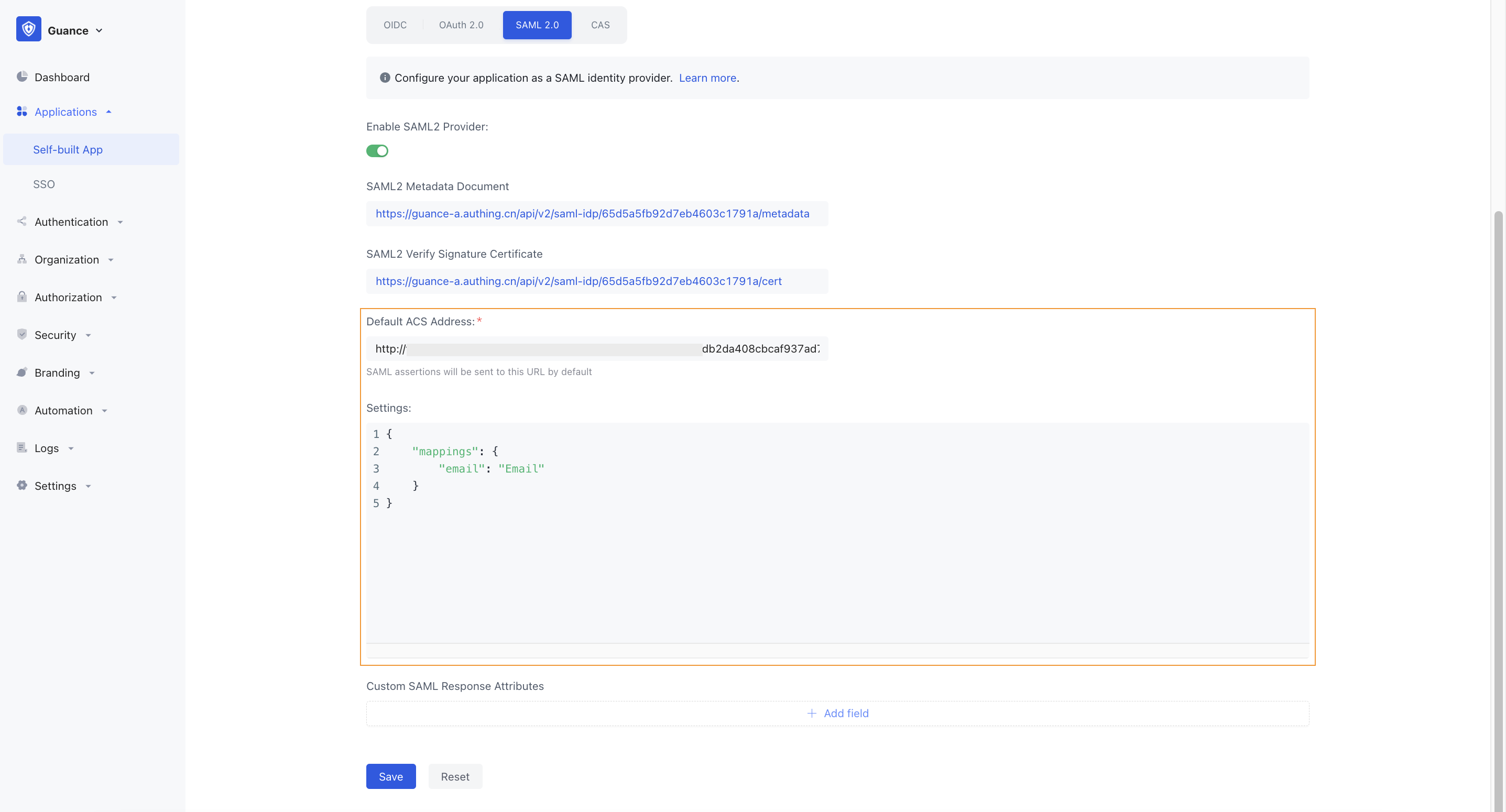Authing¶
Setup¶
1. Authing Account Registration/Login¶
You can create an Authing account through the following steps. If you already have an account in use, you can directly configure it in the next step.
Note: Currently, Guance only supports SSO login of email account.
2. Create a User¶
Create a user in Organization > Employees > Create.
Note: Both Username and Email can be used to create accounts. When creating a user with a username, the username must be an email. If single sign-on is implemented using a username account, a mapping relationship between the username and email needs to be added later in the SAML protocol configuration.
3. Create an Application¶
Note: If you already have an application in use, you can ignore this step and go straight to the next configuration. The application name and authentication address here requires custom configuration.
After creating the user, go to Applications > Self-built App > Create to configure the application information.
4. Configure SAML 2.0 Identity Provider Information¶
Go to your application configuration page > Protocal Configuration and drop down to the bottom to find more identity protocols. Configure SAML2 identity provider information.
Adjust the default protocol type of Authentication Configuration to SAML2.
Fill in the default ACS address (assertion address). (This configuration is only used to obtain metadata for the next step, and can be replaced after the correct assertion address is obtained in Guance. Example assertion address: https://auth.guance.com/saml/assertion)
Download the SAML2 metadata document, which will be uploaded and used at the SSO identity provider creation place of Guance;
5. Select Application Access Authorization¶
Go to the tab Access Authorization and check the permission Add to Single Sign On.
6. Enable SSO in Guance¶
7. Update Authing ACS Address and Mapping¶
After configuring Guance SSO, get the assertion address, update Auhting SAML2 > Default ACS Address, and add the field mapping setting.
mapping
// Authing email maps Guance email; no need to copy
{
"mappings": {
"email": "Email"
}
}
// Authing username maps Guance email; no need to copy
{
"mappings": {
"username": "Email"
}
}
